In a world saturated with images, some pictures go beyond the surface, capturing profound messages that resonate on a deeper level. Visual art has a unique ability to convey complex emotions, social issues, and philosophical ideas with just a glance. In this article, we explore 15 pictures that carry powerful meanings, challenging our perceptions, sparking reflection, and revealing truths about the human experience. Each of these images tells a story, provoking thought and offering insight into the hidden layers of life, society, and existence itself.
1. Trickle-Down Inequality
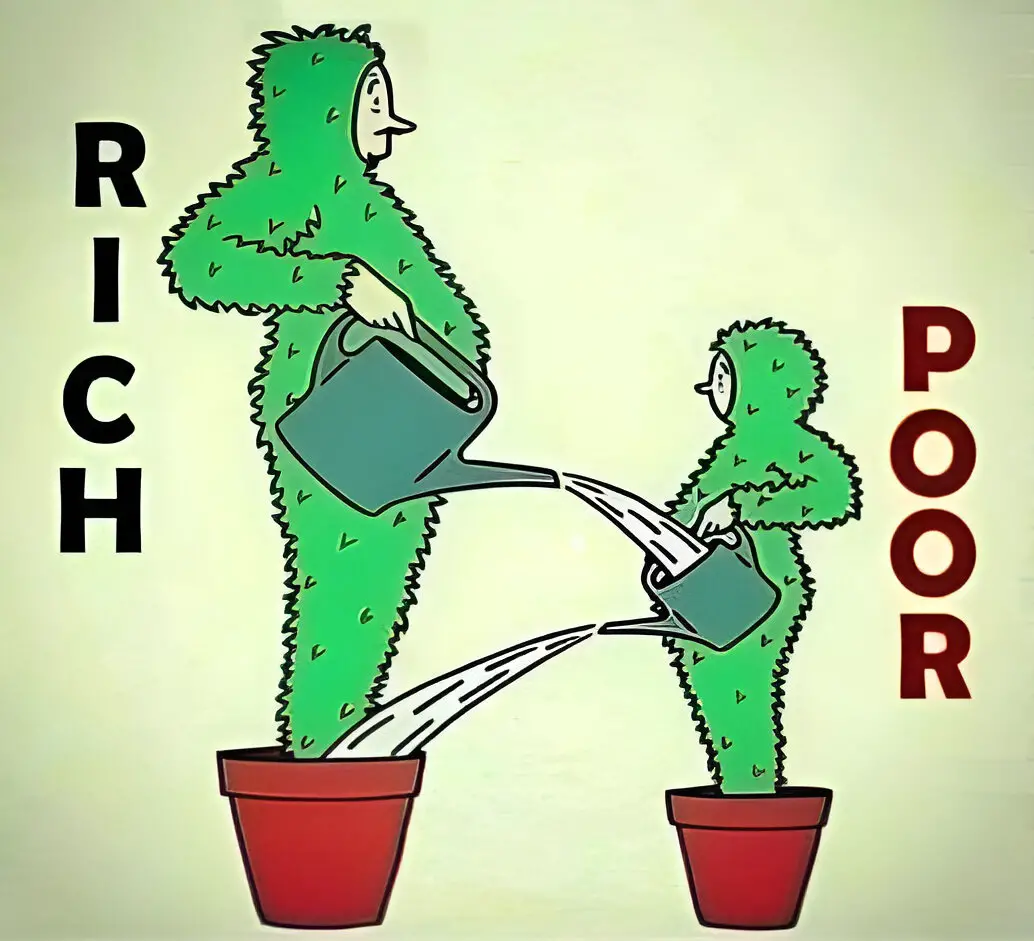
This image powerfully captures the theme of economic inequality. The taller figure, labeled “RICH,” waters itself with abundance, while the smaller figure, labeled “POOR,” struggles to catch the overflow from the rich. Both figures are depicted as plants, symbolizing human growth and development, yet the poor figure is given only the remnants of what the rich receive. The illustration highlights how wealth and resources are often unevenly distributed, with the poor forced to rely on the excesses of the rich, reinforcing a cycle of disparity. This visual metaphor speaks to the broader societal issue of unequal opportunity, where those with more resources are able to grow and thrive, while those with less are left behind.
2. Squeezing Patients for Profit

This image offers a sharp critique of private healthcare systems, symbolizing how patients are often financially drained by exorbitant medical bills. The doctors and nurses, representing healthcare providers, are seen wringing a patient like a wet cloth, squeezing both water and money from him into a large basin filled with cash. The expression on the patient’s face shows pain and helplessness, emphasizing the emotional and financial toll of seeking medical care. The illustration highlights how profit-driven healthcare systems can prioritize financial gain over patient welfare, leaving individuals burdened by overwhelming costs.
3. Hidden Agendas Behind Bureaucracy
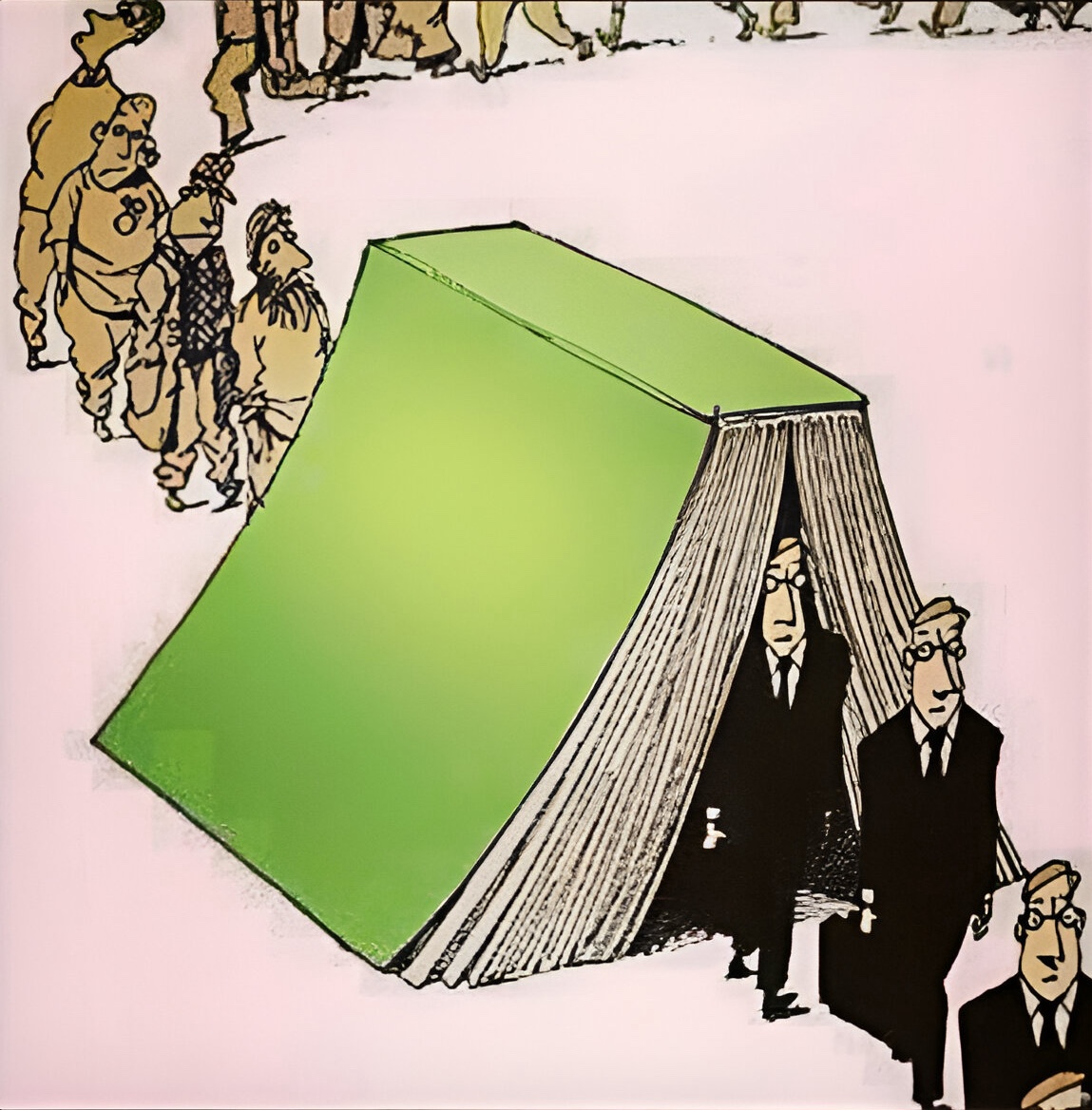
This image depicts a stark contrast between the common people and those in positions of power. A large book, symbolic of bureaucracy or legal systems, is used as a tent by suited figures representing politicians or corporate leaders. Meanwhile, ordinary citizens, depicted in a disorganized crowd, are kept at a distance. The image suggests that complex systems of governance or bureaucracy serve as a shield, allowing those in power to operate in secrecy, disconnected from the realities of the public. It critiques how laws and policies often obscure truth, creating a barrier between the powerful and the people they are meant to serve.
4. Distracted by Devices
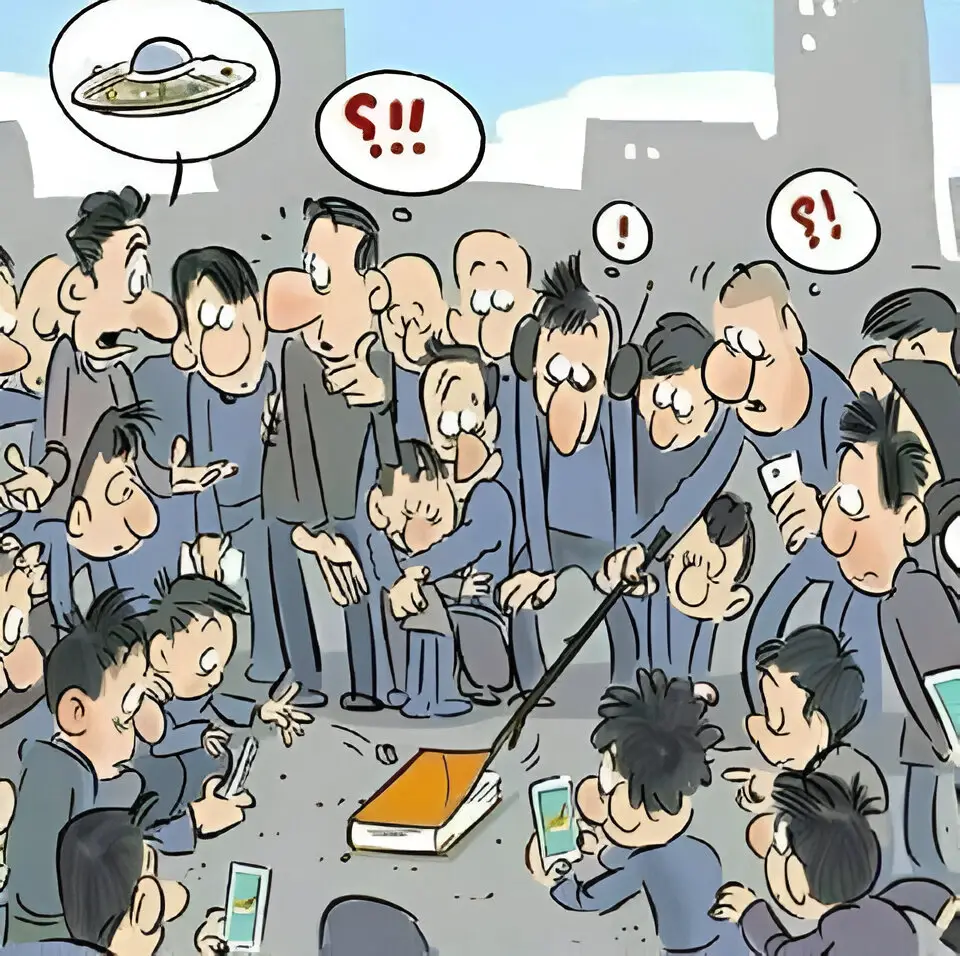
This satirical illustration presents a bustling urban scene where a crowd of people are completely absorbed in their mobile devices, oblivious to an extraordinary event unfolding above them – the presence of an alien spacecraft. The image provides a stark commentary on our modern obsession with digital technology and how it can blind us to the world around us, even to potentially life-changing events. The artist’s use of contrasting elements – the mundane act of checking phones versus the fantastical appearance of a UFO – effectively highlights the absurdity of our digital fixation. This cartoon serves as a wake-up call, urging viewers to look up from their screens and engage with the real world, lest they miss out on truly remarkable experiences.
5. Digital Sheep
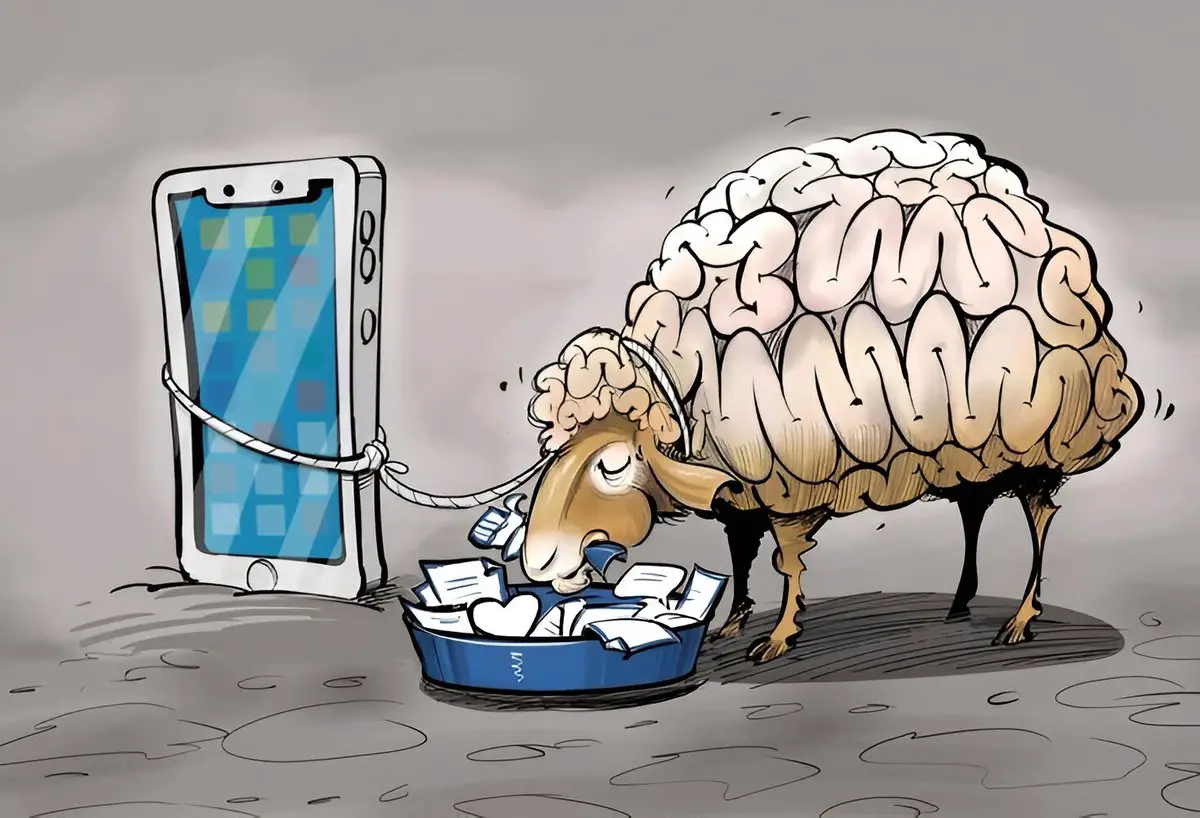
This thought-provoking cartoon depicts a sheep with an enlarged, brain-shaped body tethered to an oversized smartphone. The image serves as a powerful metaphor for the modern phenomenon of technology addiction and its impact on independent thinking. The sheep’s brain, representing human cognition, is literally bound to the digital device, suggesting how our constant connection to smartphones and social media can shape and potentially limit our thoughts and perceptions. The stark, simple design emphasizes the message, inviting viewers to reflect on their own relationship with technology and consider whether they too are becoming “digital sheep” – followers rather than independent thinkers in the age of information overload.
6. Longing for Connection
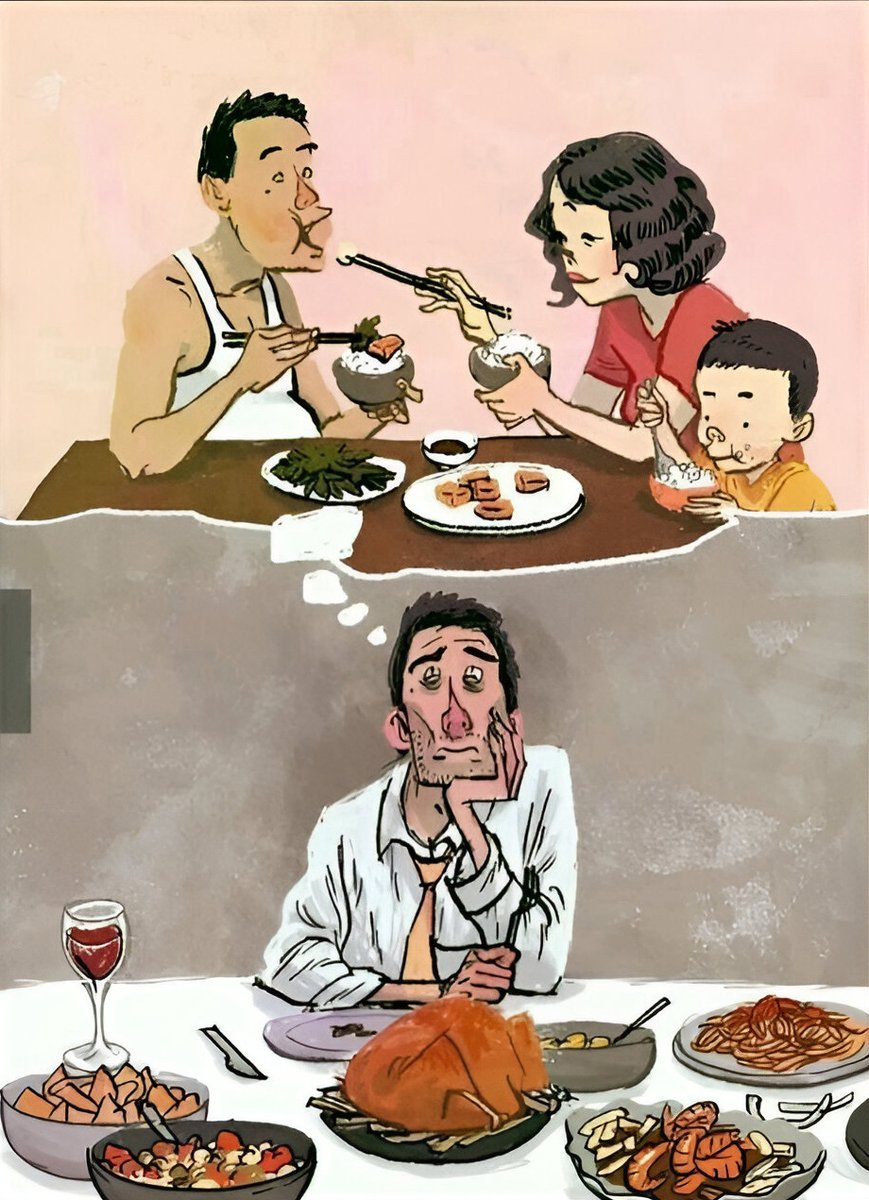
This poignant illustration contrasts material abundance with emotional scarcity. In the foreground, a well-dressed man sits alone at a table laden with gourmet dishes and fine wine, his expression one of melancholy. Above him, a thought bubble reveals his true desire: a simple family meal where he’s surrounded by loved ones, sharing modest food but rich in warmth and companionship. The stark difference between the two scenes powerfully conveys the message that wealth and luxury are poor substitutes for genuine human connection. The image prompts viewers to reflect on their own priorities, questioning whether the pursuit of success and material goods might be coming at the cost of meaningful relationships and true happiness.
7. Double Standards
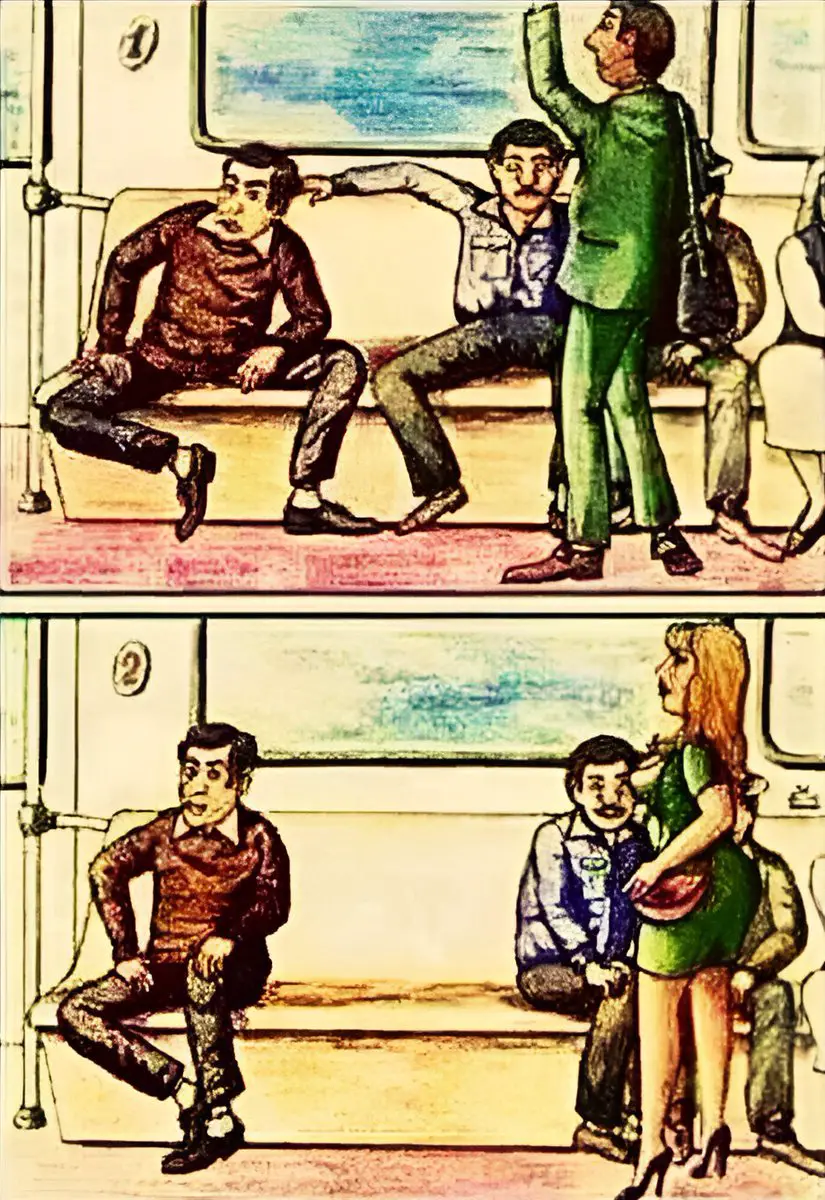
This two-panel cartoon effectively illustrates societal double standards based on gender. In the top panel, a man stands on a subway, his arm stretched out to hold onto a handrail. In the bottom panel, an attractive woman assumes the exact same position. The reactions of those around them, however, are markedly different. While the man’s posture goes unnoticed, the woman’s identical stance draws appreciative glances from male passengers. This simple yet powerful comparison highlights the pervasive nature of gender bias in public spaces, where women’s bodies are often objectified or sexualized even in mundane situations. The cartoon serves as a critique of these ingrained societal attitudes, encouraging viewers to recognize and challenge such double standards in their own perceptions and behaviors.
8. Misplaced Priorities
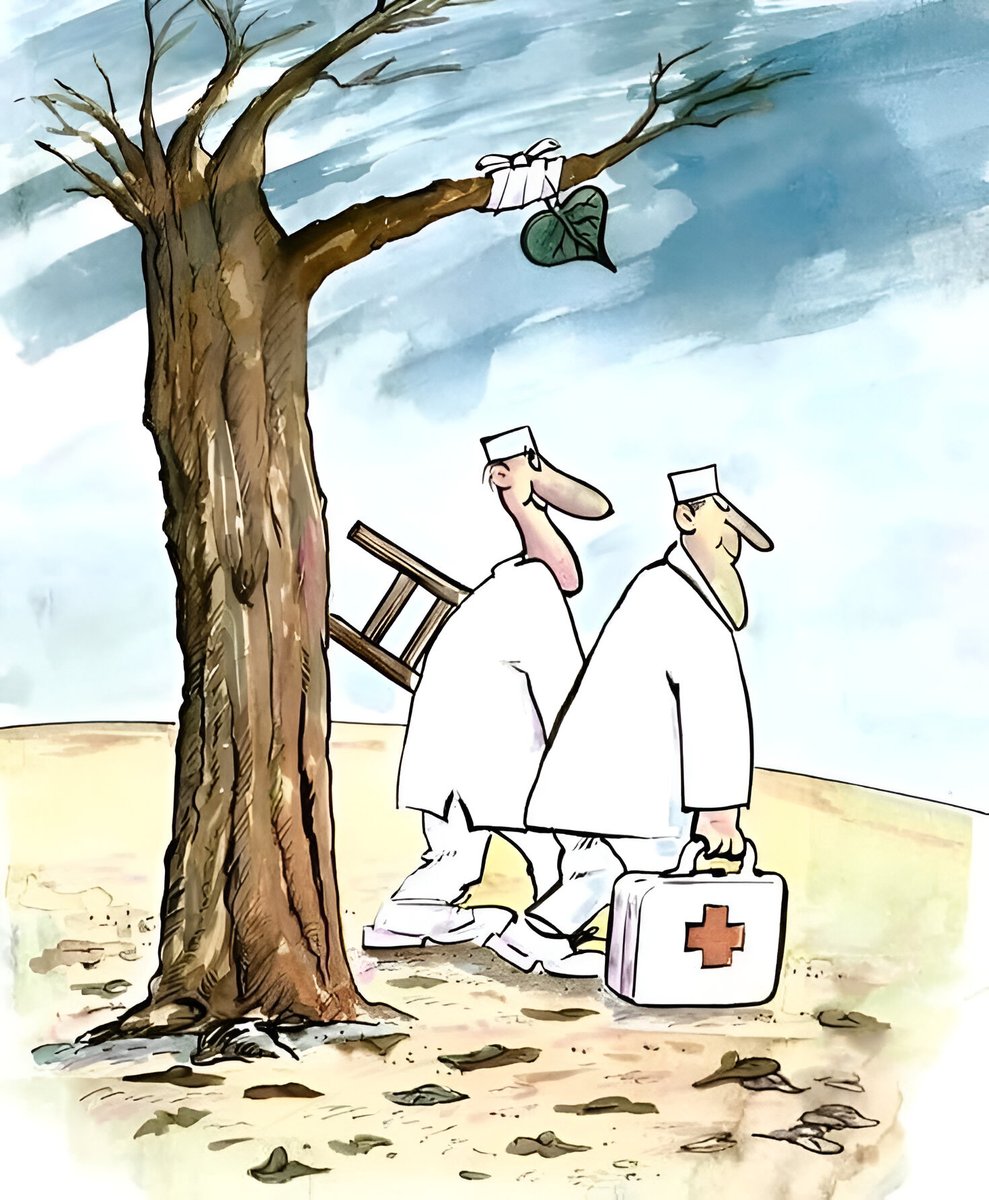
This satirical cartoon depicts two figures, presumably doctors or scientists based on their attire, approaching a barren tree. The tree has a single green leaf and, incongruously, a gift box hanging from one of its branches. One figure carries a ladder while the other holds a medical bag, suggesting they’re there to “treat” the tree. The absurdity of gifting a present to a dying tree, rather than addressing its lack of foliage or the barren environment, serves as a metaphor for how we often apply superficial solutions to deep-rooted problems. This image critiques our tendency to address symptoms rather than causes, particularly in areas like healthcare, environmental issues, or social problems. It prompts viewers to consider whether our approaches to complex issues are truly effective or merely cosmetic fixes that fail to address the underlying causes.
9. Virtual vs. Real Nature
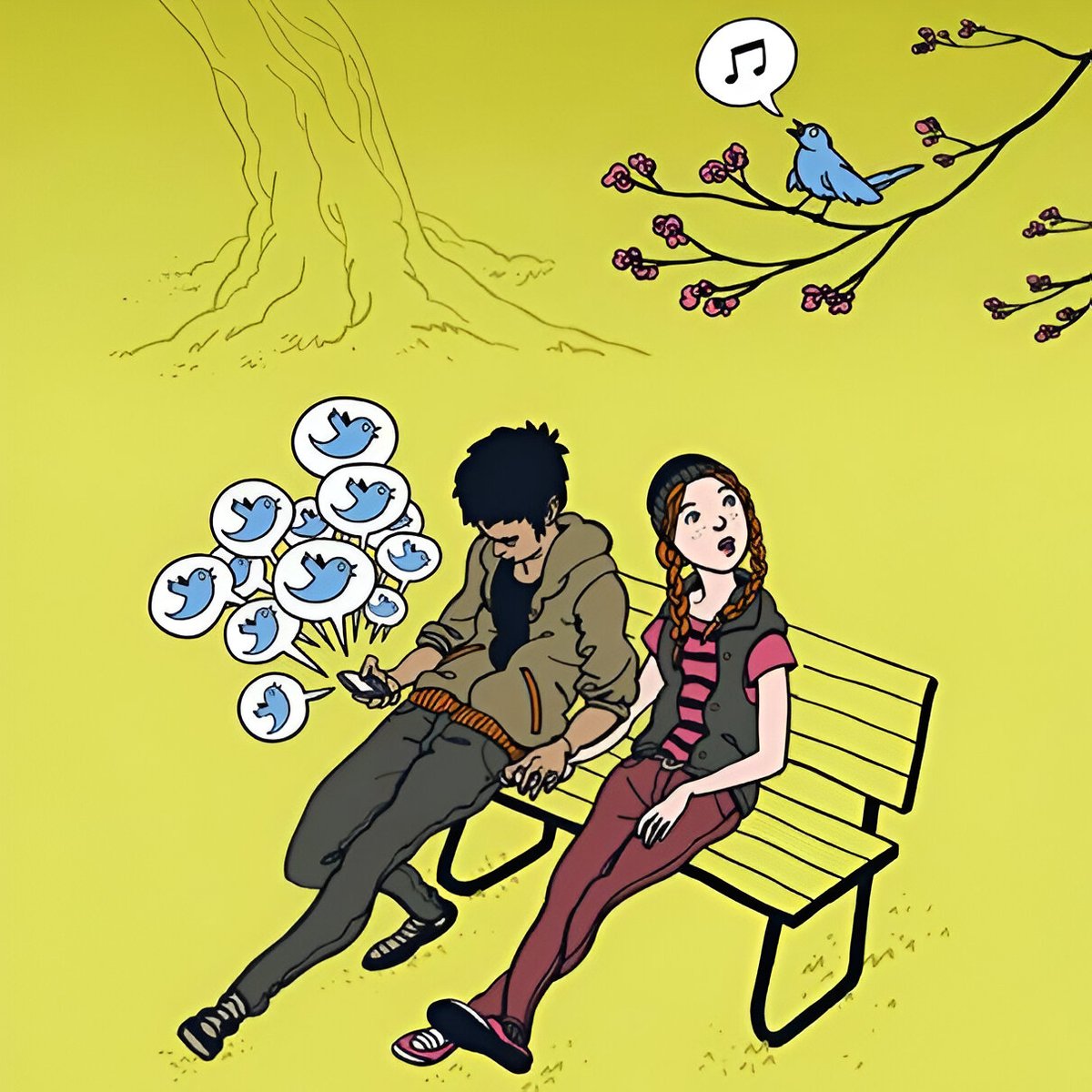
This thought-provoking illustration contrasts the digital world with the natural one, highlighting our increasing disconnection from reality. In the foreground, two young people sit on a park bench, but their attention is entirely consumed by their devices. The man is engrossed in his phone, surrounded by Twitter bird icons, suggesting his immersion in social media. Meanwhile, the woman looks on in surprise, perhaps at something on his screen. Above them, a real bird perches on a flowering branch, singing a tune represented by a musical note. The stark juxtaposition between the virtual “birds” captivating the couple and the actual bird going unnoticed serves as a powerful metaphor for how technology often blinds us to the beauty and simplicity of the natural world around us.
10. Misguided Leadership
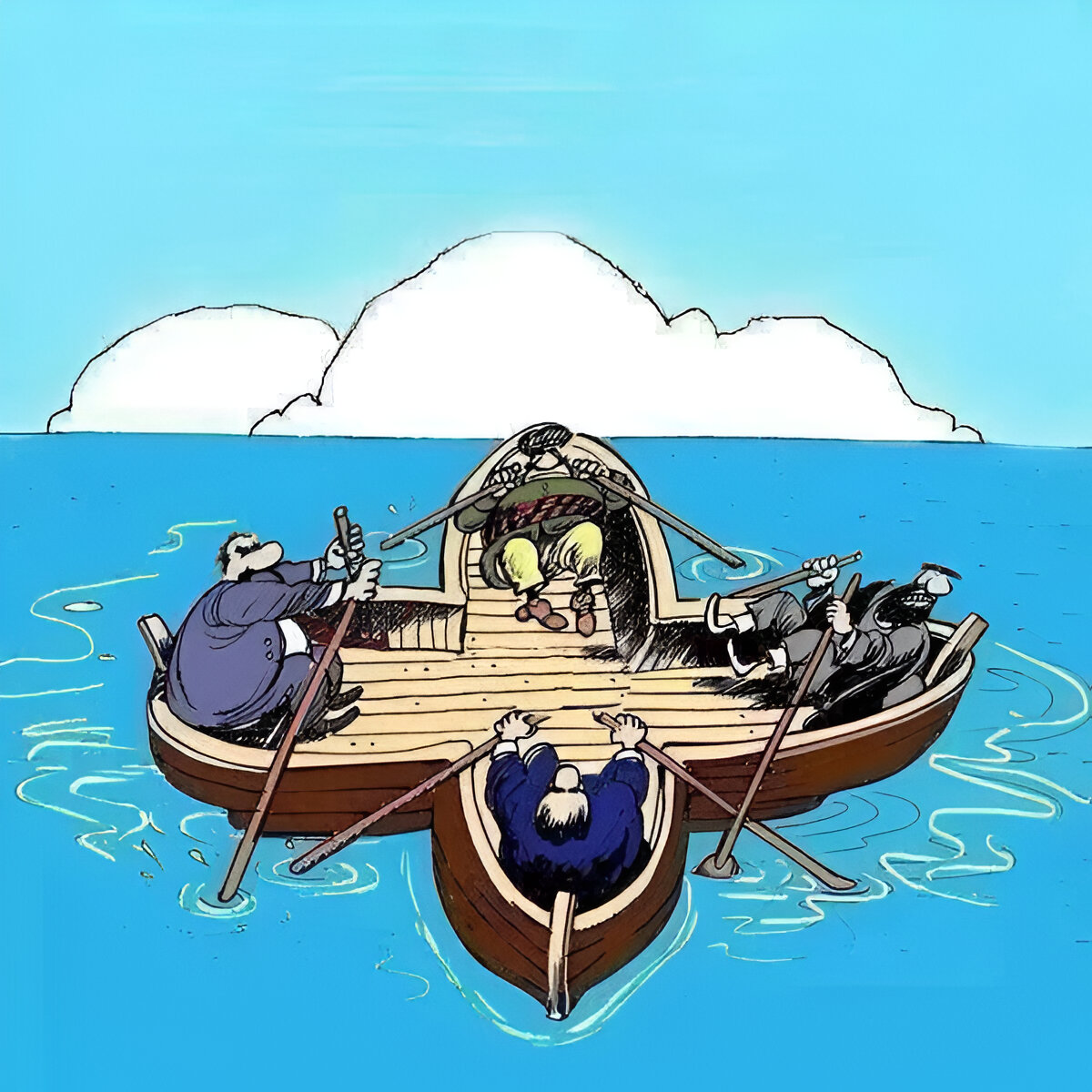
This satirical image depicts a boat at sea, representing a metaphor for organizational or societal leadership. The boat contains four figures, each rowing in a different direction, while a fifth figure sleeps in the boat’s cabin. This chaotic scene symbolizes the lack of unity and clear direction often found in leadership structures. The sleeping figure in the cabin likely represents an absent or ineffective leader, oblivious to the team’s struggles. Meanwhile, the team members, each pulling in their own direction, showcase how conflicting goals or poor communication can hinder progress. The calm sea and clear sky in the background further emphasize that the boat’s lack of movement is solely due to internal issues rather than external challenges. This powerful visual commentary highlights the importance of alignment, communication, and active leadership in any collaborative effort.
11. Social Media Addiction in Education
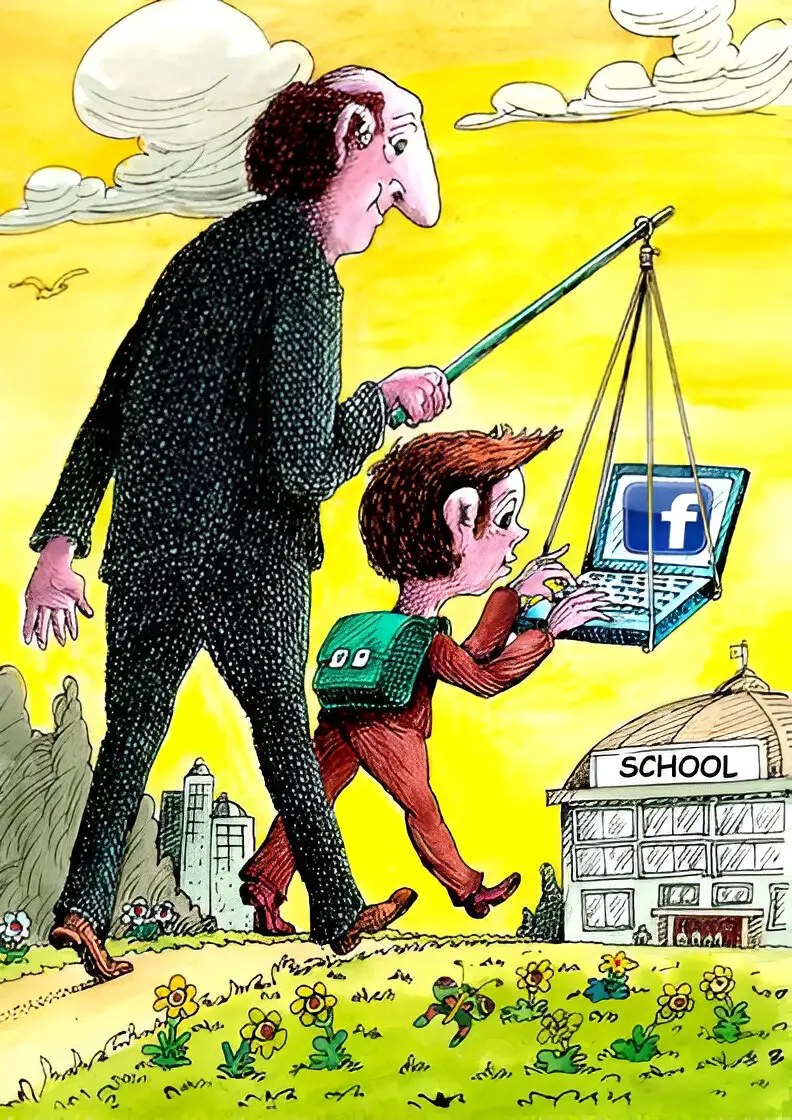
This provocative cartoon illustrates the pervasive influence of social media on education. A towering figure, likely representing a parent or authority figure, leads a small child towards a school building. However, instead of carrying a traditional backpack, the child is tethered to a laptop displaying the Facebook logo. This imagery suggests that social media has become an inseparable part of a student’s academic life, potentially overshadowing traditional learning methods. The disproportionate size of the laptop compared to the child emphasizes the overwhelming presence of social media in young lives. The school building in the background appears small and insignificant, further highlighting how digital platforms may be eclipsing traditional educational institutions. This thought-provoking image raises questions about the balance between technology and traditional learning in modern education.
12. Digital Dependence
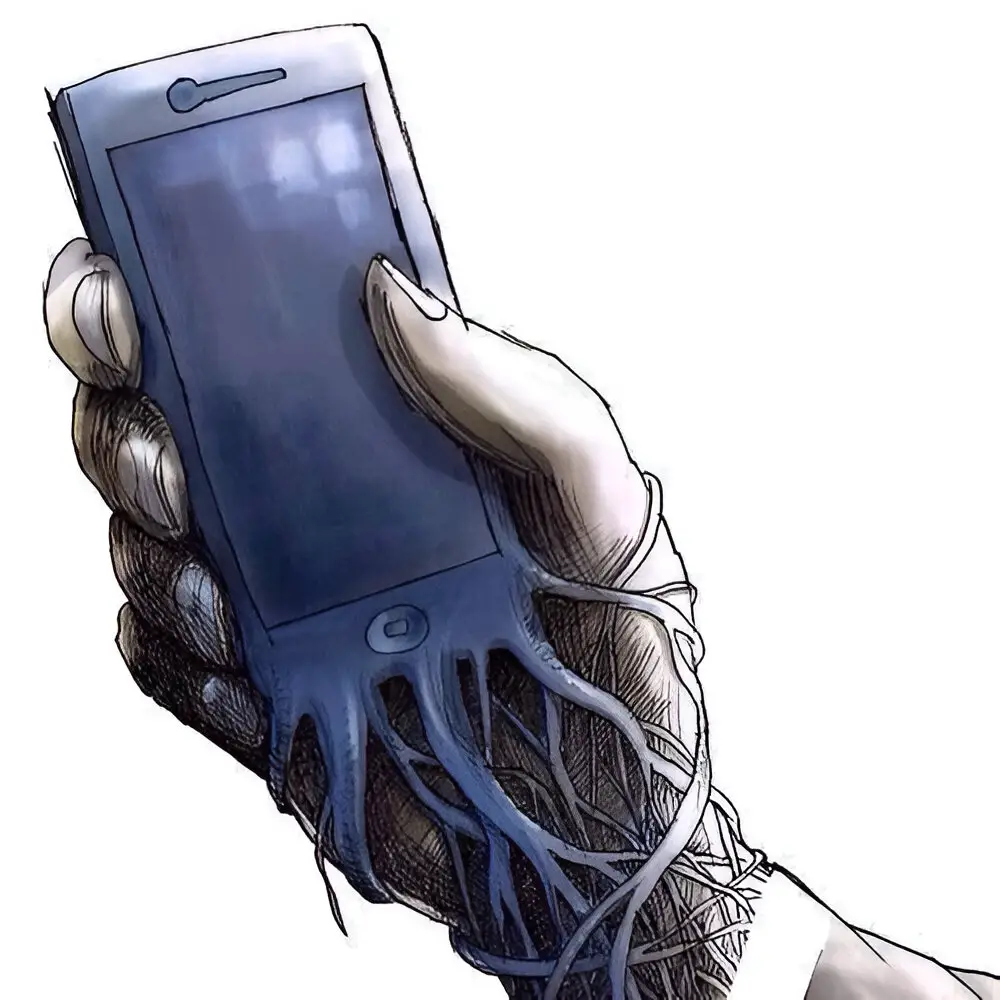
This striking image portrays a hand holding a smartphone, but with a disturbing twist – the device appears to be melting and fusing with the person’s hand. Tendrils extend from the phone, intertwining with the fingers and palm, creating a biomechanical effect. This powerful visual metaphor represents the growing symbiosis between humans and their digital devices, suggesting that our reliance on technology has become so intense that it’s literally becoming a part of us. The blurring lines between flesh and machine evoke thoughts about how deeply integrated smartphones have become in our daily lives, potentially to the point of addiction or loss of individuality. This thought-provoking illustration challenges viewers to consider their relationship with technology and the potential consequences of excessive digital dependence.
13. The Weight of Education
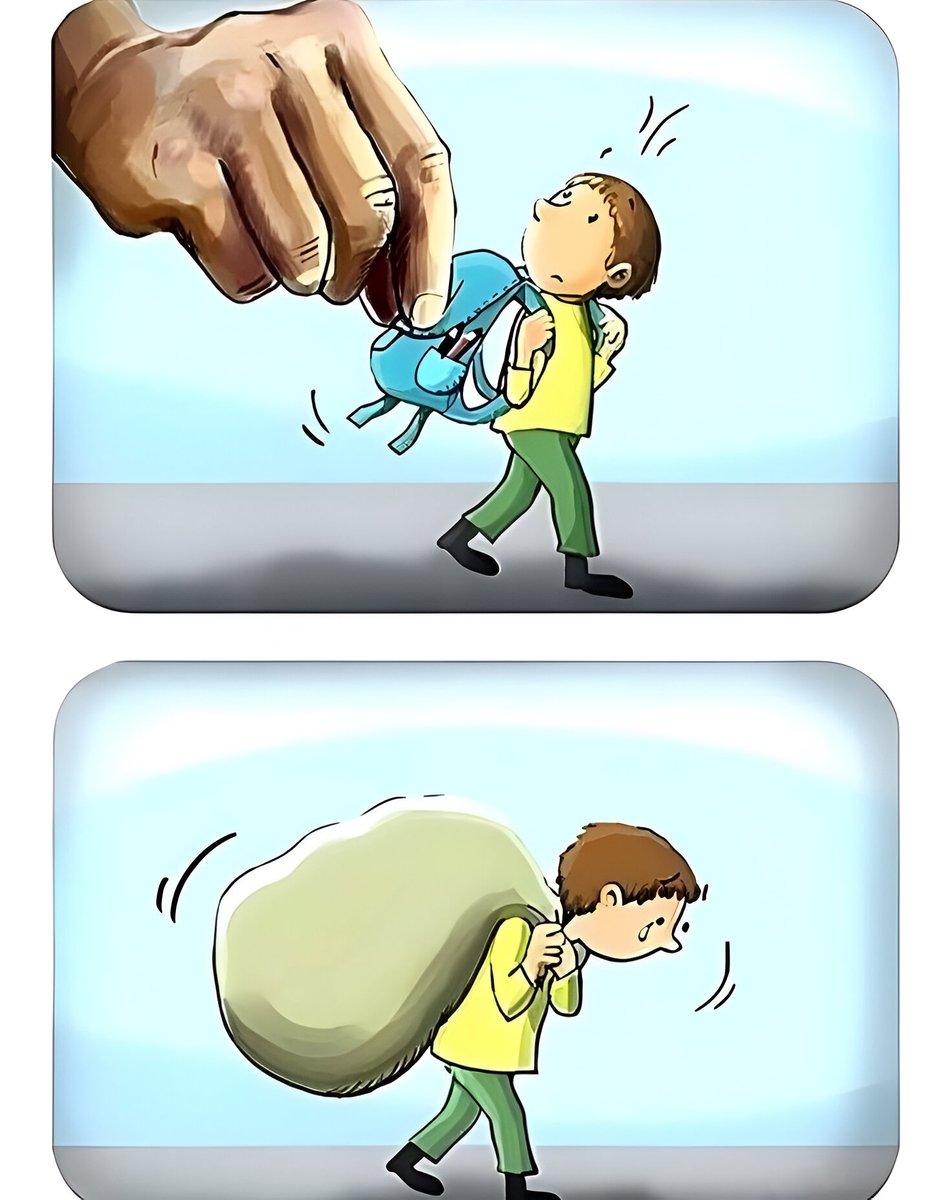
This two-panel cartoon provides a poignant commentary on the pressures placed on students in the educational system. In the top panel, a large hand (likely representing authority figures or the system itself) is seen lifting a small backpack off a child’s shoulders. The child’s surprised expression suggests this is unexpected, perhaps even a relief. However, the bottom panel reveals the true weight of education as the same child struggles under the burden of an enormous, overstuffed sack. This visual metaphor effectively illustrates how the perceived lightening of the educational load (perhaps through technological aids or curriculum changes) can actually result in a heavier, more overwhelming burden for students. The contrast between the two images powerfully conveys the often unseen pressures and expectations placed on young learners, prompting reflection on the true cost of modern education practices.
14. The Cycle of Consumption
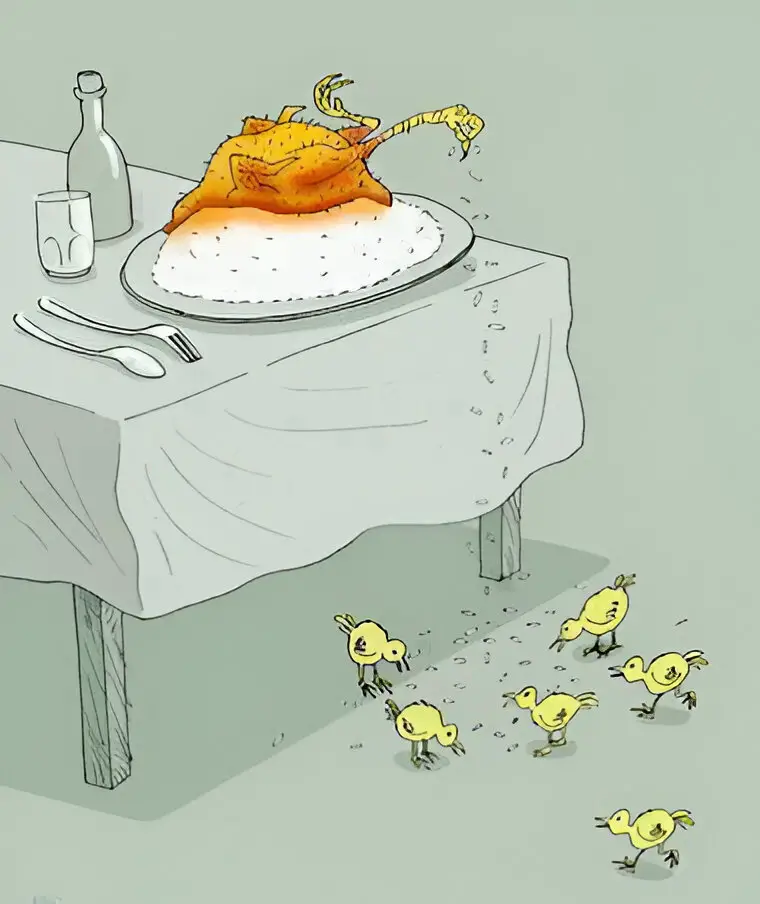
This thought-provoking illustration presents a stark juxtaposition between a lavish meal and its unintended consequences. On a table draped with a white cloth, we see a roasted chicken served on a platter, accompanied by a bottle and glass of what appears to be water or white wine. Beneath the table, a group of small yellow chicks scurry about, seemingly unaware of their potential fate. The image creates a powerful commentary on the food chain and the often-overlooked connection between the meat we consume and its living origins. The oblivious chicks, portrayed in a cute, cartoonish style, contrast sharply with the prepared dish above, forcing the viewer to confront the reality of where their food comes from. This visual metaphor encourages reflection on our eating habits, animal welfare, and the ethical implications of meat consumption in modern society.
15. Digital Dependency
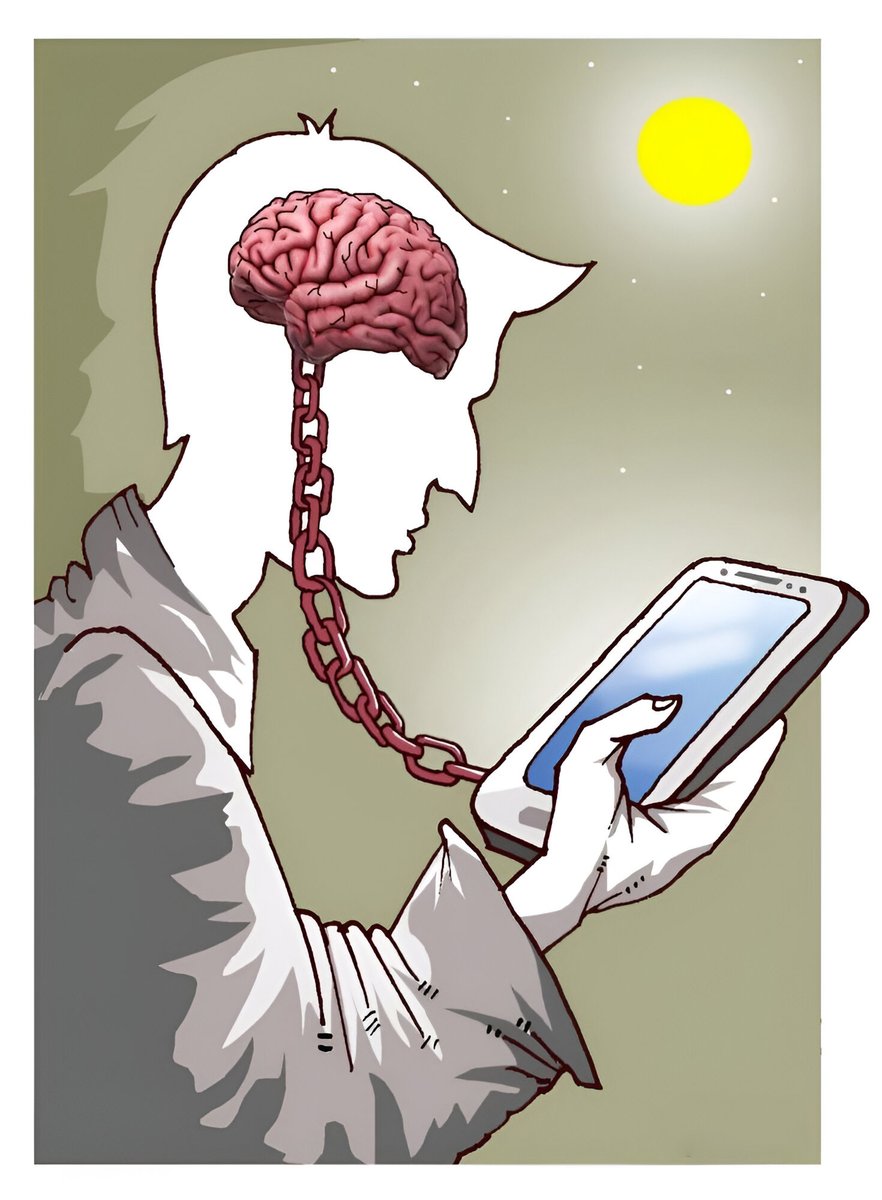
This illustration metaphorically depicts the addictive nature of smartphone usage and its impact on our cognitive functions. The image shows a person’s silhouette holding a smartphone, but instead of a normal head, we see an exposed brain connected to the device by a chain. This powerful visual suggests that our constant engagement with digital devices has created a direct, almost inescapable link to our minds. The chain symbolizes the addictive nature of smartphone use, implying that we are mentally tethered to our devices. The brain’s exposure emphasizes the cognitive aspects of this dependency, hinting at how digital addiction might affect our thinking processes, attention spans, and overall mental health. The nighttime setting, indicated by the moon and stars, further underscores how this digital dependency persists even during hours traditionally reserved for rest and rejuvenation. This thought-provoking image invites viewers to consider their own relationship with technology and its potential long-term effects on their mental well-being.
